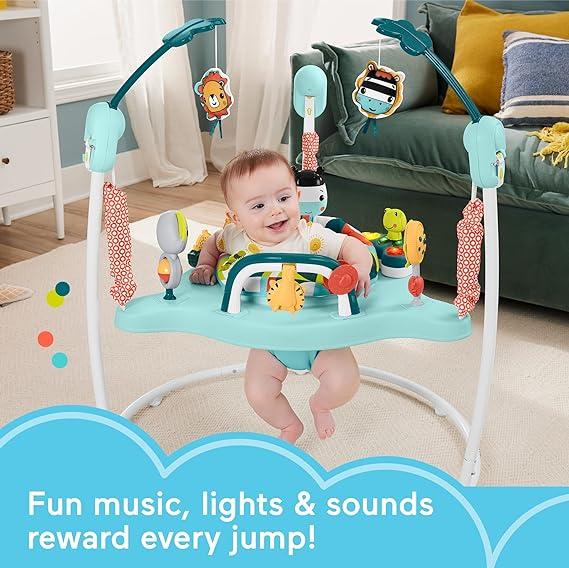
Overview of baby walkers’ accidents:
Table of Contents

1. Falls:
Babies in walkers need more motor skills and awareness to navigate potential hazards like stairs or uneven surfaces.
The speed and mobility of baby walkers can lead to sudden falls, increasing the risk of injuries such as head trauma, fractures, or sprains.
Caregivers need to be vigilant and create a safe environment, free of stairs and obstacles when allowing a baby to use a walker.
2. Collision Hazards:
The increased mobility of a baby in a walker can result in collisions with furniture, walls, or other objects in their surroundings.
Collisions may lead to minor injuries like bruises or more severe injuries, depending on the force and nature of the impact.
Caregivers must ensure that the space where a baby uses a walker is free of potential collision hazards.
3. Training and pinching:
Baby walkers often have moving parts, like wheels and folding mechanisms, which can pose a risk of trapping or pinching a baby’s fingers or toes.
Injuries from trapping or pinching can range from minor cuts or bruises to more serious harm, requiring immediate attention.
Regular checks of the walker’s mechanisms and careful operation can help minimize the risk of such accidents.
4. Access to Hazardous Items:
The elevated position of a baby in a walker provides access to items on tables or countertops that may be hazardous.
This can include small objects that pose a choking risk or substances that could be harmful if ingested.
Caregivers should ensure that the environment is free of potential hazards and that harmful items are out of the baby’s reach.
5. Developmental Delays:
Prolonged use of baby walkers can impact the natural development of a baby’s walking and balancing skills.
The artificial support provided by walkers may hinder the strengthening of the core muscles necessary for independent walking.
It’s important to balance the use of baby walkers with ample floor time and supervised play to encourage natural developmental milestones.
6. Tipping Over:
Walkers with a narrow base or an uneven weight distribution may tip over more easily.
Tipping accidents can result in injuries if the baby’s head or upper body makes contact with the floor.
Choosing walkers with stable designs and avoiding use on uneven surfaces can help prevent tipping accidents.
7. Lack of supervision:
The risk of accidents increases when a baby is left unsupervised in a walker because caregivers might not be able to respond quickly enough to possible threats.
Constant supervision is crucial to ensuring the baby’s safety and addressing any emerging risks promptly. Caregivers should prioritize uninterrupted attention when a baby is using a walker to prevent accidents and injuries.
Creating a safer environment for newborns when using baby walkers can be facilitated by acknowledging and mitigating these potential concerns. To protect children’s safety and well-being well-being, always heed the advice and guidelines given by professionals.

Here’s a detailed guide to preventing baby walker accidents:
Choose a safe walker.
- Select a walker with safety features such as a sturdy frame, a wide base, and a braking system.
- Ensure the walker meets safety standards and has undergone thorough testing.
Age and Developmental Readiness:
- Introduce the walker when the baby shows signs of being able to sit up and has some control over head and neck movements.
- Follow the manufacturer’s age and weight recommendations to ensure the baby is developmentally ready for the walker.
Supervision:
- Never leave the baby unattended in the walker. Continuous supervision is crucial to prevent accidents and respond quickly to potential dangers.
- Keep the baby within sight and reach while using the walker.
Safe Environment:
- Use the walker in a controlled environment, free of obstacles, stairs, and other hazards.
- Remove items that the baby could reach, such as sharp objects, small toys, or choking hazards.
Adjust Height Appropriately:
- Set the walker’s height to match the baby’s so that the feet touch the ground comfortably.
- Avoid using pillows or cushions to prop the baby up, as this can lead to instability.
Brake Functionality:
- Ensure the walker has a reliable brake system that works effectively on different surfaces.
- Test the brakes regularly and replace or repair any malfunctioning components.

Time Limits:
- Limit the baby’s time in the walker to prevent overuse and potential developmental issues.
- Use the walker as an occasional tool for entertainment and mobility rather than a constant aid.
Educate Caregivers:
- Instruct caregivers, including family members and babysitters, on the proper use of the walker and potential risks.
- Emphasize the importance of supervision and adherence to safety guidelines.
Regular Maintenance:
- Regularly check the walker for any indications of wear, loose components, or damage.
- Keep all moving parts well-lubricated and ensure that adjustments are made as the baby grows.
Follow the safety guidelines:
- Read and follow the manufacturer’s instructions and safety guidelines provided with the walker.
- Be aware of any recalls or safety updates related to the specific Walker model.
Encourage Natural Development:
- Allow the baby plenty of floor time for crawling, rolling, and other natural movements to promote overall motor skill development.
- Use the walker as a supplementary tool rather than a primary means of mobility.
- By combining these measures, caregivers can create a safer environment for babies using walkers, minimizing the risk of accidents and promoting the child’s overall safety and well-being.
FAQs
Conclusion
Lastly, injuries from baby walkers highlight the significance of close observation and safety precautions. These gadgets provide movement and enjoyment, but they also come with concerns, like the possibility of falling or crashing. Parents must use caution. They are making sure that areas devoid of dangers, such as stairs, are safe for the use of walkers. Risks can also be decreased by selecting walkers with safety features and according to the manufacturer’s instructions. Safer alternatives for the child to play include stationary activity centers. Parents can assist in preventing accidents and guarantee a safe environment for their child’s exploration and development by placing a high priority on safety and supervision.
